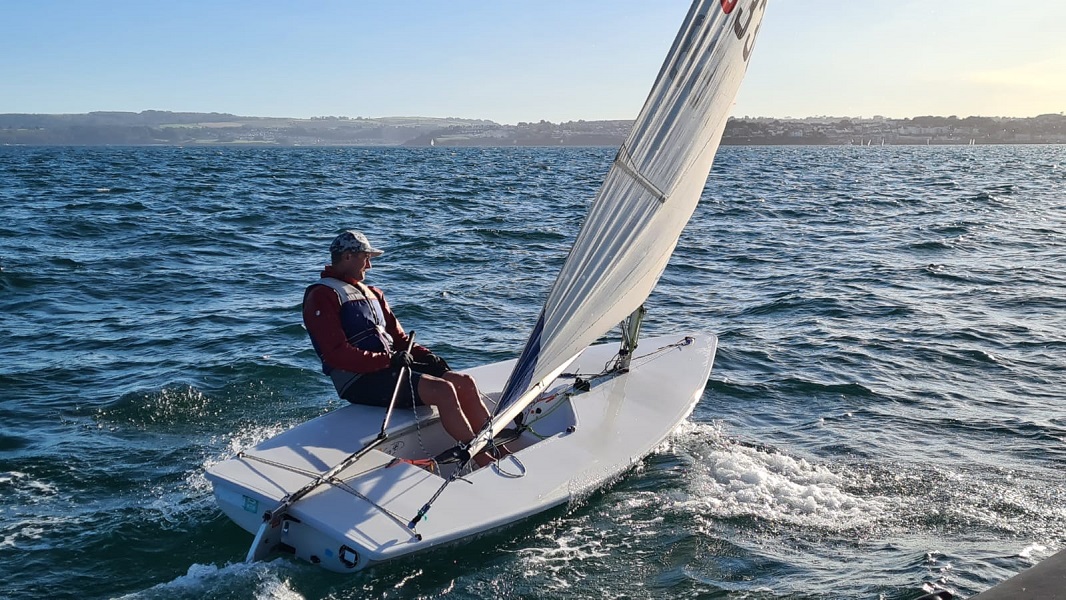
Learning To Sail
Realising that it’s been over two and a half years since we set off from Dubai on our sailing yacht Aroha, now seemed like a good time to learn how to sail! Yes, yes, of course we know how to sail, but I’ve always wanted to go back to dinghy sailing to relearn the basics and apply those principles for better handling of Aroha. Though Aroha isn’t a racing boat and will likely never win a race, it’s not about finding ways to increase speed but optimising comfort and security. That said, on long passages it is nice being able to tweak the sailing set up – achieving an extra half knot of boat speed could shave a day off a 12 day passage.
We’ve got a little lazy sailing Aroha and there’s a load of sail controls; like the vang and adjustable backstay; that we seldom use. Compared to sailing a dinghy, Aroha is a lot more forgiving. The “sweet spot” for setting the sails for particular conditions is much wider, compared to a dinghy where you find yourself constantly adjusting a wide range of controls.

I’d googled local sailing clubs before I came back to England and I was pleased to find that there’s a friendly club within walking distance of our new Devon home. It can be a little isolating moving to a new town with few local links and this seemed like an easy way of meeting people with common interests easily and quickly. We’re also expecting that when we return next year from our planned six months in Thailand, we’ll be able to slip right back into the Paignton social scene!
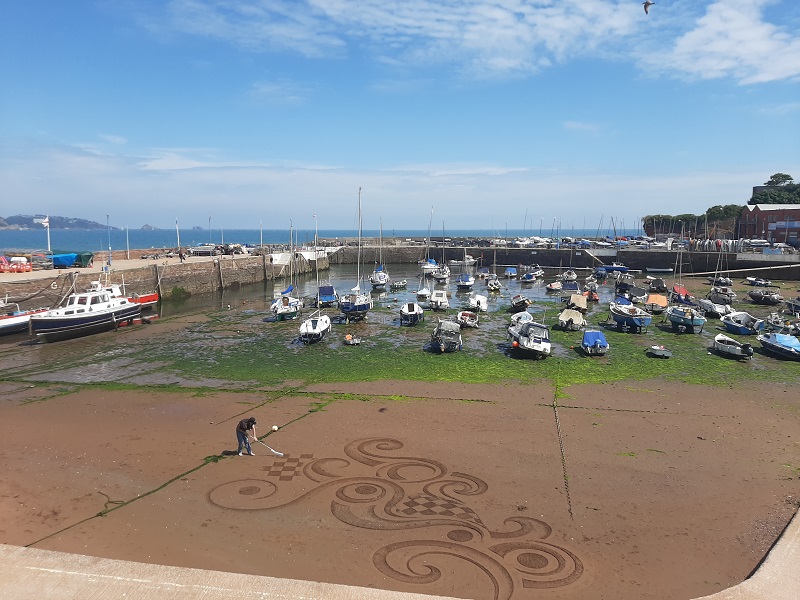
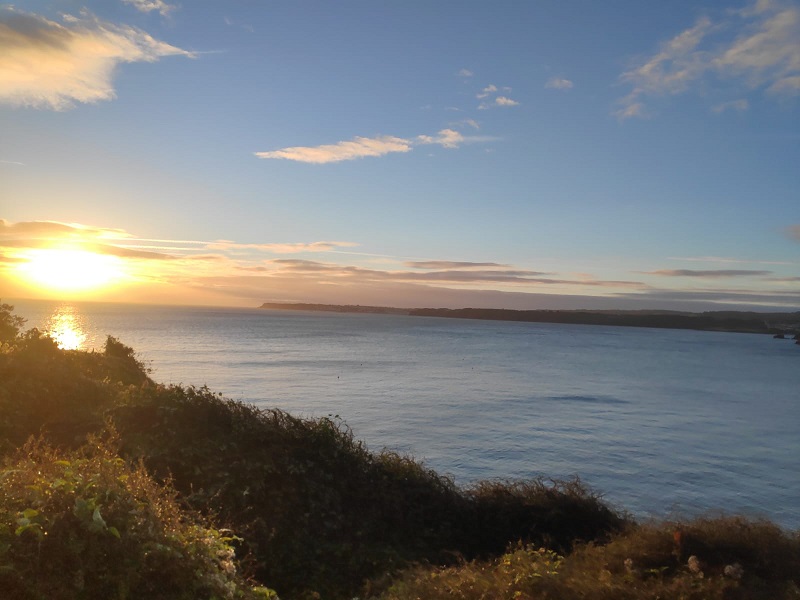
I learnt to sail when I was about eight or nine. The Napier sailing club near where we lived was selling off some ex-club Optimist dinghies, so my dad bought one and fixed it up to “as new” condition and signed me up for lessons.
The Optimist is a standard design that is extremely popular all over the world and virtually all successful competitive sailors start out in one. They’re ugly looking things, with a blunt nose and a clunky looking sprit rigged sail, and they sail like a half-submerged bathtub. I just googled and saw that the boxy design was for not only for ease of construction but also so that it could be made from two standard sized sheets of plywood! I also noticed that it has the worst handicap under the international PY handicap system, so it’s also officially the worlds slowest dinghy!
I remember being a little afraid each time I went sailing but enjoying it once I was on the water. It was pretty much the same way I felt playing soccer at around the same age, so I think that was more about my own low self-confidence rather than anything to do with the actual sailing! And because my sister had tried it and decided not to continue, I got some precious one on one time with my dad each Sunday afternoon.
After a few years I physically outgrew the Optimist and moved up to a NZ designed Starling dinghy. I raced on weekends, but also enjoyed the freedom that my set up gave me – I could bike the ten or so kilometres to the sailing club where I kept my Starling “Excelsior”, set up and head out onto the waters of Hawkes Bay. It’s a bit freaky thinking of that level of independence now – maybe if I remembered I’d leave a “gone sailing” note for mum, but there was no safety boats and no formal system of logging your plans. One summer weekday evening I was rigging her, and I couldn’t securely close a shackle that connects a shroud (the wires that hold the mast up) – “that’s good enough!” I thought. Sure enough, an hour or so later when I was a few kilometres offshore, POP! The shackle parted company and the mast toppled into the water. I pulled the bits on board as well as I could and luckily a passing local fishing boat heading back to port was able to tow me back in. I often reflect on the lesson learnt that day – close enough isn’t good enough!
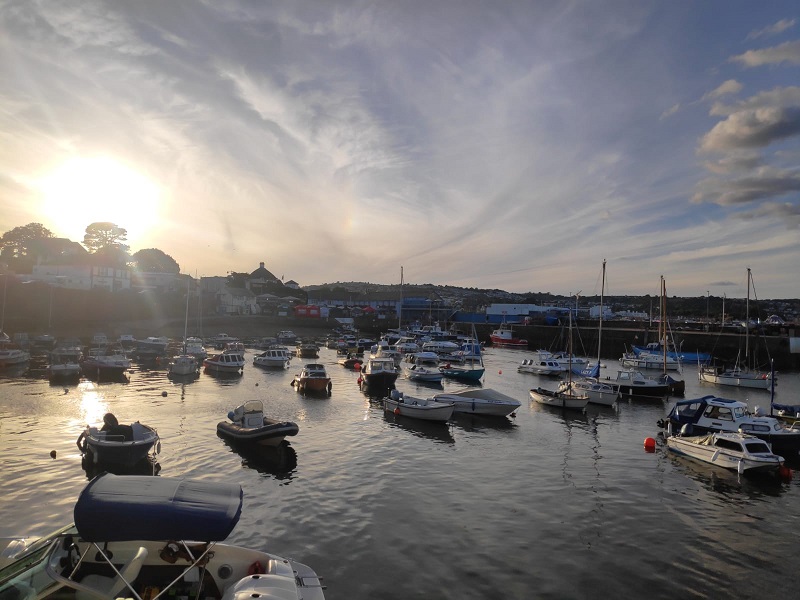

Shortly after arriving here in England, I arranged for an experienced member of the local club to take me out on a two-handed dinghy (an RS Vision). It was great fun! I often joke that on Aroha you can adjust the position of the sails or course, then must wait a minute to feel it take effect on her seven-ton weight! Of course, it’s the complete opposite on a small light dinghy- you pull a sheet (a rope that controls the position of the sails) or move the rudder and you can see and feel the response immediately. I’d mentioned to my chaperone Arthur that the dinghy felt very light and tippy and after a pause to consider a polite response, he responded with a dour face “this boat is so stable [in the world of dinghies], we call it the barge”.

At first, I was a bit offended at being branded a novice. At one coaching briefing, the youth instructor asked me if I knew the give-way rules. Of course, I wanted to reply “well, I’ve sailed a third of the way around the world without hitting another boat…” but went with a simple “yes” instead. I’ve been away from dinghy sailing for so long, it wasn’t a bad thing to assume I knew nothing. Out of curiosity, I calculated that if we’d sailed all our ocean miles in Aroha (about 10,500nm) in a straight line, we’d have made it about halfway around the world. And based on longitude from her start in Dubai to her current location near Phuket, it’s only about 12% of the way.
We’re used to having non sailing friends on board Aroha, so we stopped using many sailing terms long ago. On Aroha we have a kitchen and a bathroom, not a “galley” and “heads”, and left and right sides, not “port” and “starboard”. I’ve had to relearn some basic dinghy stuff now, for example “luff”, not “the front of the sail”, or the “bow” not the “the pointy end”.
After the initial introduction sail, I tentatively moved to a club Laser and now sail with the club’s novice fleet, which often sails and races with the junior fleet. Most of my peers on the water are about 15 years old, which is quite appropriate considering that that’s about the same age I previously stopped dinghy sailing!
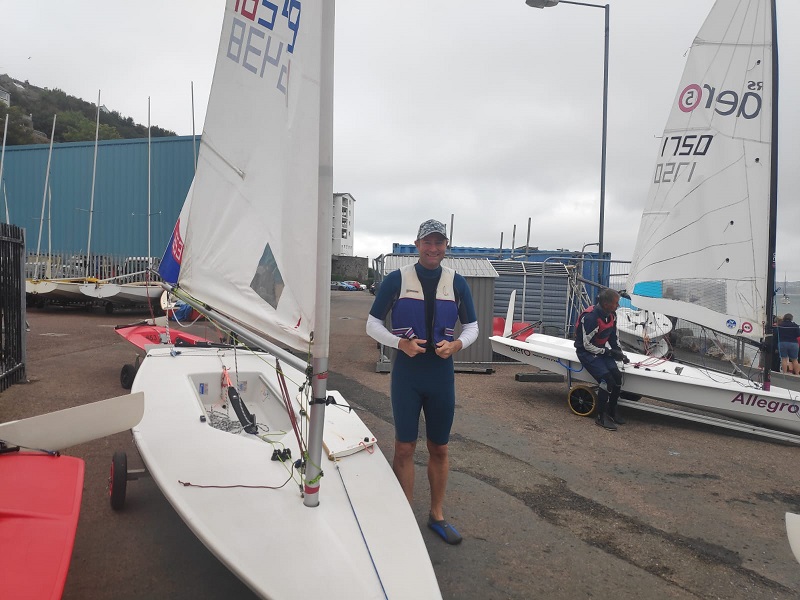

I initially thought I’d be happy just zipping around the bay but joining some of the races provides a nice sense of purpose; being able to see how you compare to others and most importantly, get feedback from other sailors who’re sailing the same or similar boats.
I aim to learn or practice at least one new thing each time I sail. And being branded a novice means I can ask stupid questions without feeling… stupid. I’ve noticed that the youth sailors are great at giving me tips – a scuba instructor friend observed years ago that he preferred teaching kids, since they are more accustomed to a learning type environment, and I guess it’s similar here. My fellow adult sailors are better at advice of the “you’ll go faster if you keep your sail above the water” kind of advice!

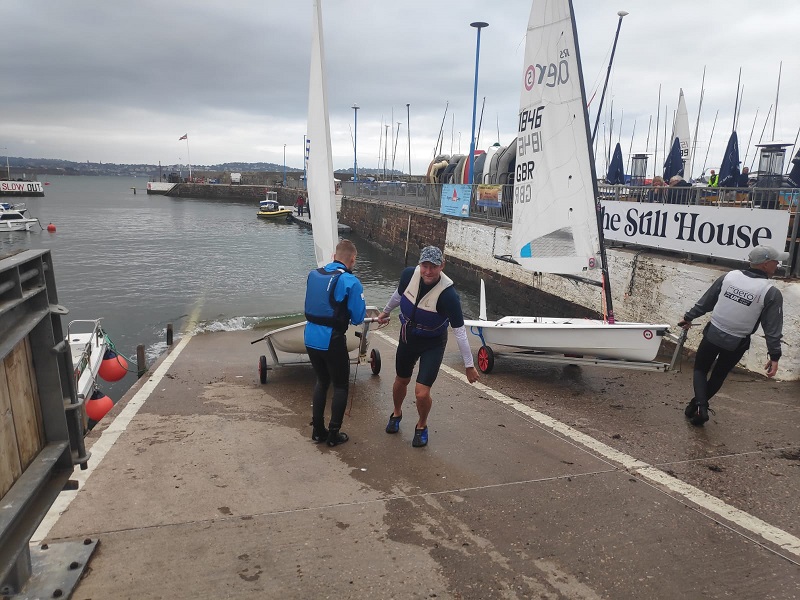
Keeping a dingy upright can be a challenge sometimes, and I’ve become quite accustomed to capsizing – something I used to fear when I was younger. The two windiest times I’ve been sailing here just happened to have coincided with weekend regattas at neighbouring sailing clubs. As one of my sailing friends pointed out that because of the extra safety boats on the water during regattas, that makes them the perfect opportunity to practice outside your comfort zone.
Racing at the first windy regatta was suspended as the wind built on day two – I’d already capsized a few times during the racing, but as the fleet started to make its way back to harbour, I capsized again. My boat righted itself and started sailing back to harbour without me! Helen and I had visited the local RNLI (Royal National Lifeboat Institution) earlier that week, which had me wondering about which search pattern they might employ looking for a sailor without his dinghy! Luckily, my dinghy rounded up, and after a somewhat frantic swim, I managed to drag myself back on board.
Lasers and similar dinghies are famed for being able to plane – that is, lift themselves out of the water and to skim along the surface. It’s exhilarating when it happens, and until windy regatta number two, I’d been working hard on getting it to happen and then sustaining it. There were strong winds and bumpy seas for the second regatta, such that on points of sail when the wind was behind me, every single boat was planning along from wave crest to wave crest, whether you wanted to or not!
On Aroha, we often term scary experiences optimistically as “character building”. It helps us look back at them as learning experiences, rather than focus on the fear that sometimes creeps into our adventures. I labelled the first regatta “invigorating”, and the second simply “terrifying”. I’ve never felt like I’ve needed positive affirmation for things I do, but I was grateful when one of my sailing friends pointed out that just two months prior, I was searching for someone to take me out on the two-handed dinghy because I was too afraid to do so alone, and now here I am, willingly sailing in “terrifying” conditions!

We’re planning our return to Thailand and to Aroha later this year, and I’m looking forward to sailing her again, but maybe with a little more finesse. It’s been a valuable experience getting back to basics, and nice to know that there is always something new to learn. This time around we will be basing ourselves in a smaller sailing area with no big, character-building open water passages to do. It should be a perfect opportunity to hone these recently re-acquired skills, and maybe an opportunity for me to finally step up from the novices category!
Follow and like us to be notified of future blogs!
www.facebook.com/ripeningnicely
